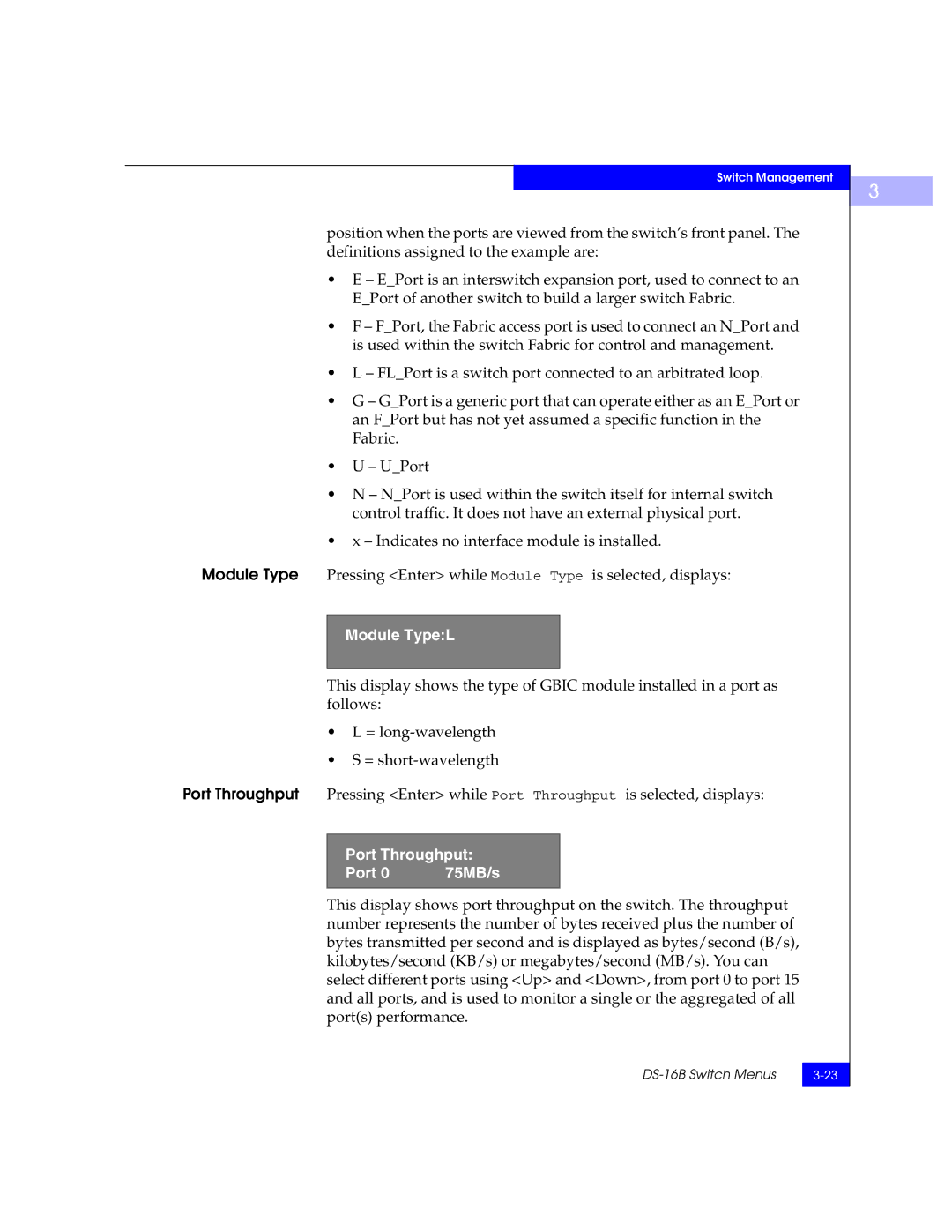
Switch Management
position when the ports are viewed from the switch’s front panel. The definitions assigned to the example are:
•E – E_Port is an interswitch expansion port, used to connect to an E_Port of another switch to build a larger switch Fabric.
•F – F_Port, the Fabric access port is used to connect an N_Port and is used within the switch Fabric for control and management.
•L – FL_Port is a switch port connected to an arbitrated loop.
•G – G_Port is a generic port that can operate either as an E_Port or an F_Port but has not yet assumed a specific function in the Fabric.
•U – U_Port
•N – N_Port is used within the switch itself for internal switch control traffic. It does not have an external physical port.
•x – Indicates no interface module is installed.
Module Type Pressing <Enter> while Module Type is selected, displays:
Module Type:L
This display shows the type of GBIC module installed in a port as follows:
•L =
•S =
Port Throughput Pressing <Enter> while Port Throughput is selected, displays:
Port Throughput:
Port 0 | 75MB/s |
This display shows port throughput on the switch. The throughput number represents the number of bytes received plus the number of bytes transmitted per second and is displayed as bytes/second (B/s), kilobytes/second (KB/s) or megabytes/second (MB/s). You can select different ports using <Up> and <Down>, from port 0 to port 15 and all ports, and is used to monitor a single or the aggregated of all port(s) performance.
